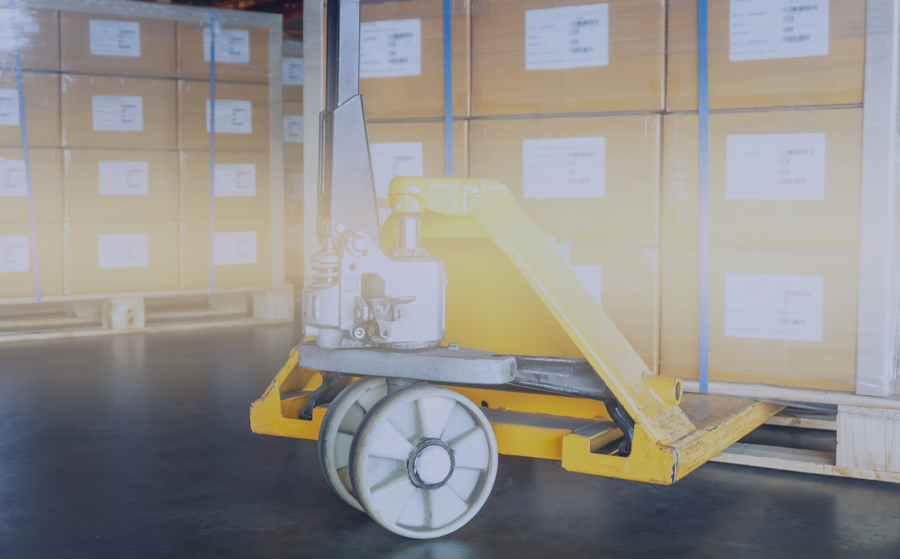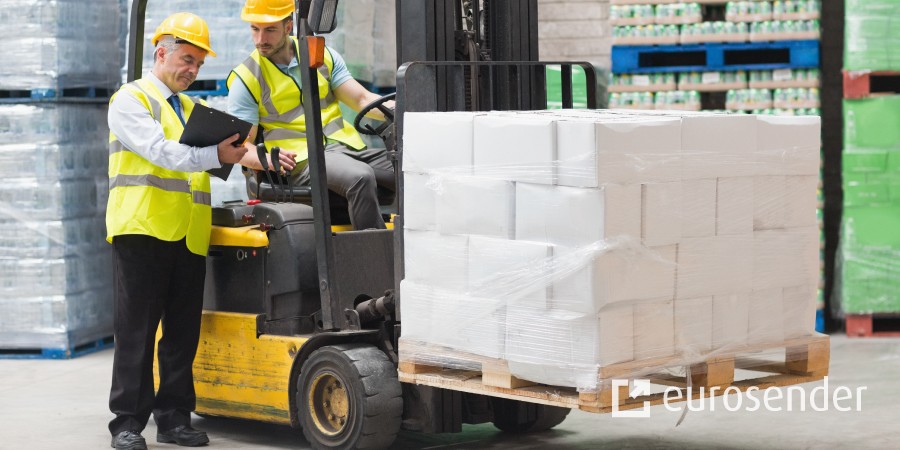Pallets are an essential part of the logistics industry, used for transporting goods efficiently and safely. One of the most common and effective ways to handle pallets is by using a forklift.
If you are new to operating a forklift or simply want to refresh your skills, this step-by-step guide will walk you through the process of how to pick up a pallet with a forklift.
You may also be interested in:
What is the best way to pick up a pallet with a forklift?
Follow these 10 steps to lift pallets safely with a forklift:
1. Perform a pre-operational check
Before operating a forklift, it is crucial to conduct a pre-operational check to ensure that the vehicle is in optimal condition. Check the fluid levels, tyres, brakes, and controls to make sure everything is working correctly.
2. Check the load capacity
Determine the load capacity of your forklift. Each forklift has its own load capacity specified by the manufacturer. It is essential never to exceed this limit to ensure both your own safety and the integrity of the load.
3. Approach the pallet
Approach the pallet from the front, making sure the forks are level and slightly wider than the pallet. Align the forklift with the centre of the pallet, leaving enough space to manoeuvre the forks underneath.
4. Lower the forks
Slowly lower the forks until they are just slightly below the level of the pallet deck. Be careful not to insert the forks too deep, as this can damage the goods or make it challenging to lift the pallet.
Read more about:
- What to do if my pallet is delivered damaged?
- How to stack boxes on a pallet for shipping
- How high should pallets be stacked
5. Insert the forks
Position the forks so that they are aligned with the openings in the pallet. Ideally, the forks should be inserted as far as possible, ensuring maximum stability and preventing the load from shifting during transport.
6. Lift the pallet
Using the lift control, slowly begin raising the forks, steadily lifting the pallet off the ground. Take care to ensure that the pallet is level and stable throughout the lifting process.
7. Inspect the load
Once the pallet has been lifted, pause briefly to inspect the load. Verify that it is balanced, secure, and not exceeding the maximum load capacity of the forklift. If necessary, make any adjustments to ensure proper balance.

8. Transport the pallet
With the pallet securely lifted, you can now transport it to the desired location. Remember to drive slowly and avoid any sudden movements to maintain stability. Always keep a clear view of the path ahead and pay attention to obstacles or other hazards.
9. Lower the pallet
Upon reaching the designated location, find a safe and level spot to unload the pallet. Ensure that the area is clear of any obstructions or people. Slowly lower the pallet by gently moving the lift control in the opposite direction.
10. Secure the forklift
Once the pallet has been safely unloaded, park the forklift in a designated area. Engage the parking brake, turn off the engine, and ensure that all controls are in the neutral position.
Are there any alternatives to lifting pallets with a forklift?
For lightweight pallets, a manual-operated pallet jack can be used as a forklift substitute. Unlike forklifts, pallet jacks do not require fuel and are ideal for smaller storage spaces. On the other hand, forklifts are designed for heavy-duty lifting and are best suited for larger pallets.
Read more about:
- Moving a pallet without a forklift
- Tail lift delivery
- Moving heavy items
- How to pack pallets for shipping
- Loading/unloading pallets from a truck
What kind of forklift do I need for my pallet?
There are many different types of forklifts. Depending on the number and size of your pallets and where you would like to transport them, you can choose between the following types of forklifts:
- Counterbalance forklifts are the most common types of forklift trucks, usually used in warehouses. They require a forklift license. Continue reading about logistics and warehousing services.
- Three-wheel counterbalance forklifts offer more manoeuvrability and are perfect for narrow aisles.
- Reach trucks are commonly used in warehouses where the racks are stacked high and you need a forklift to move them down or put them back up.
- Powered pallet trucks or walkies run on electric energy and are often used to carry small loads.
- Sideloaders have the forks built-in on the side, thus allowing them to pick up longer and wider loads.
- Teletrucks or telescopic forklifts are often compared to small cranes as they can reach heights and angles that other forklifts cannot.
Continue reading about:
Different ways to power a forklift
- Electric forklifts may have a higher upfront cost, but they offer long-term cost savings due to their energy efficiency. In addition, they emit zero emissions and operate quietly, making them ideal for indoor use.
- Gas forklifts move faster and can lift heavier loads.
- Diesel forklifts are recommended for outdoor heavy lifting.
Forklift safety tips
- Properly trained forklift operators. This is something that is on top of the list of safety tips when manoeuvring a forklift. Hire drivers that possess forklift licenses or train your personnel to avoid any accidents.
- Evenly stacked pallets. Unbalanced stacks can easily fall over and cause pallet damage.
- Avoid damaged pallets.
- Lifting pallets instead of pushing them. Never bulldoze the pallets around, lift them in the air before moving them.
- Slower speed. Do not manoeuvre the forklift at full speed as it will only result in damaged pallets.
- Never short fork. Fully insert the forks when you are lifting the pallet, otherwise, the balance will be offset.
You do not need to know how to pick up a pallet with a forklift to book a pallet collection with Eurosender. Whether you are an individual or a business, our platform offers a wide range of shipping options. If your shipment requires the use of a forklift or other equipment during collection or delivery, please inform us beforehand. Register on our platform to get access to special discounts and benefits!
Interested in learning more about pallet and freight shipping? Check all our articles about pallet deliveries.
This article was written in collaboration with Mariia Rublenyk.
